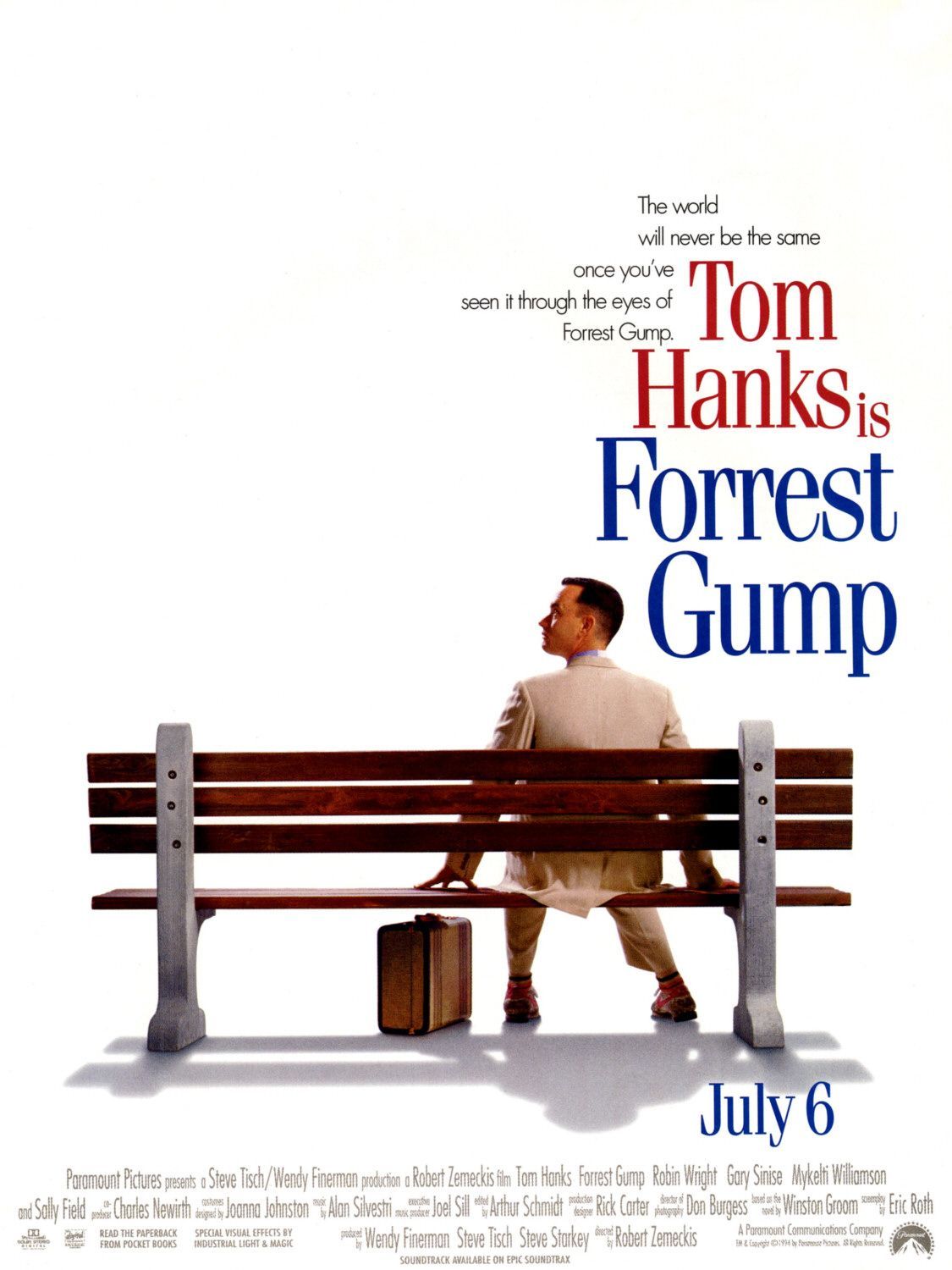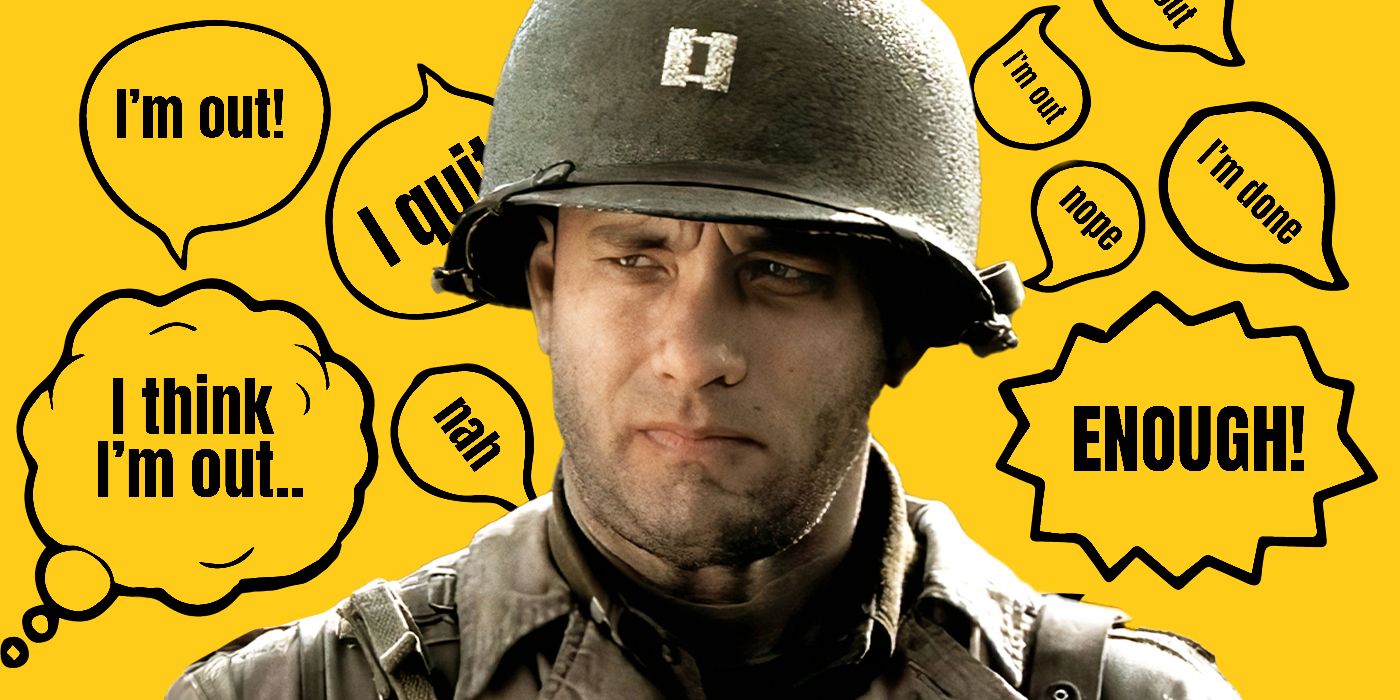The Big Picture
-
Forrest Gump
‘s success defied expectations, becoming a cultural sensation and critical darling. - Tom Hanks’ version of Forrest is very different from the book.
- Hanks financed the iconic running scene, showcasing his dedication to the film’s vision.
Sometimes, selling a concept to a studio or financier can be as difficult as executing said concept. If you were writer Eric Roth, director Robert Zemeckis, or actor Tom Hanks in the early ’90s convincing a studio to sign off on a peculiar story about a simple man’s fortuitous encounters with famous figures throughout the 20th century, you certainly had a lot on your plate. Forrest Gump should never have resonated with audiences and critics upon release in 1994, but not only did the film become the year’s second-highest grosser and win the coveted Best Picture at the Academy Awards, it was an instant cultural sensation. Every ambitious creative choice and innovative special effects advancement worked. The film’s principal artists always had the right instincts, even when it came time for its star, Tom Hanks, to help finance the filming of one of the movie’s pivotal scenes.

Forrest Gump
The history of the United States from the 1950s to the ’70s unfolds from the perspective of an Alabama man with an IQ of 75 who yearns to be reunited with his childhood sweetheart.
- Release Date
- July 6, 1994
- Director
- Robert Zemeckis
- Runtime
- 142
The ‘Forrest Gump’ Movie Is Very Different From the Book
The story of the titular Forrest Gump (Hanks), a simple man with a harsh upbringing who leads a dynamic life, evolving from a college football star, and a Vietnam Vet to a shrimp boat captain, originated from a novel of the same name by Winston Groom. Narratively, the film closely resembles the 1986 book, although Groom’s story is even more outlandish, as the book version of Forrest travels into space with an orangutan named Sue. Forrest also has a bid for a seat in the U.S. Senate, which ended prematurely due to the media spotlight on his checkered past. Whereas the film ends with Forrest’s on-and-off lover, Jenny (Robin Wright), passing away from illness, as he becomes the devoted father to their child, the book ends on a more sobering note, with Forrest choosing not to be a presence in his son’s life, as Jenny is married to another man.
The most striking difference between the book and the film is apparent in their respective tones. Groom’s book was rooted in satire, juxtaposing the simplistic innocence of Forrest with the conniving behavior of those around him, particularly in the military-industrial complex. The book also comments on American culture by identifying the absurdity of valorizing Forrest as national folklore. The blockbuster film was a full-blown crowd-pleaser, aiming to make its audience earnestly laugh and cry in one fell swoop. Groom believed that Zemeckis’ film “took the rough edges off the character,” which is evident in Hanks’ interpretation, in which Forrest lacks promiscuity and profanity. Despite his critiques, the author approved of the on-screen adaptation, even if his preferred choice for the titular character was John Goodman.
Tom Hanks Needed To Pay for ‘Forrest Gump’s Running Scene
More than fishing for shrimp or playing ping-pong, one activity is synonymous with Forrest Gump. The answer is running, of course, as he was implored to do by Jenny during their youth. While the book version of Forrest was an accomplished football player for the University of Alabama, running was not a definitive trait of his, as he is 6′ 6″ and 242 pounds. He doesn’t need to sprint away from bullies. His burly physique is his line of defense. Hanks’ Forrest, svelte and agile, ran on impulse. The film emphasized this trait so much that it created a sequence from scratch highlighting Forrest’s unwavering commitment to running. For some viewers, especially ones already skeptical of the film’s mawkish tone, the three-year running odyssey in Forrest Gump is a make-or-break scene. You either embrace the mythic presentation of Forrest or become turned off by the film’s outlandish broad character stroke. The premise is quite simple: after being abandoned by Jenny, Forrest, through sheer instinct, begins running across the country for three years, inspiring followers and amassing media attention.
2:55

Tom Hanks Rescued ‘Saving Private Ryan’ After the Cast Threatened To Quit
How can you say no to Tom Hanks?
For better or worse, the running scene is impossible to forget, and it’s part of the fabric of the film’s identity. Due to financial shortcomings, this extended sequence was nearly cut. As a guest on the show In Depth with Graham Bensinger, Tom Hanks revealed that he helped finance the filming of Forrest’s run across America after the studio refused to fund it themselves. Robert Zemeckis was adamant that this scene needed to be included in the final cut, so the director turned to his star for monetary aid. “I need you to be not an actor, not an employee, I need you to be my soulmate,” Hanks recalled Zemeckis telling him. While not cheap, Hanks agreed to split the cost of the required budget to shoot the scene with Zemeckis. They agreed to give the money to Paramount upon completion under one stipulation: they were to receive a percentage of the profits of the film. Hanks also revealed another instance where Paramount could not permit filming a scene in inclement weather, as they failed to receive insurance coverage. Without hesitation, Hanks and Zemeckis covered the insurance fees.
Tom Hanks and Robert Zemeckis Formed a Bond During ‘Forrest Gump’
Hanks and Zemeckis using their own checkbook to keep production afloat was a testament to their trust in each other. After all, six years later, Hanks was willing to be stranded on an island with nothing but a volleyball in Zemeckis’ Cast Away. For Zemeckis, something was implicitly out of tune with Hanks’ performance during the first three days of filming, believing that his actor was trapped too far in his head. “We’re not going to use any of these first three days because I don’t think you have it…you haven’t got the character,” Zemeckis bluntly told his star. Hanks co-signed, and he listened to his director’s advice about not being self-conscious about his performance. The nature of portraying Forrest Gump, a slow-witted man inadvertently propped up as a savant-like figure, requires delicacy, as it could easily derail into a patronizing evocation. Zemeckis’ sound advice paid dividends, as Hanks would go on to win his second consecutive Academy Award for Best Actor.
Speaking of getting paid, Hanks’ negotiations with Paramount resulted in a major payday for the actor. Grossing over $678 million worldwide, Hanks earned a whopping $65 million off of Forrest Gump thanks to a deal that allowed him to receive a percentage of the film’s profits. His artistic instincts, which led him to become one of the most beloved actors of his generation, paved the way to financial prosperity. Hanks poured everything into Forrest Gump, including his wealth, heart, and mind. The story of Hanks providing funds to shoot a scene is a testament to the power of the movie star. They can deploy their wealth or cachet to launch visions off the ground.
Forrest Gump is available to watch on Paramount+ in the U.S.

